How to Build Your Social Media Marketing Strategy?
Table of Contents
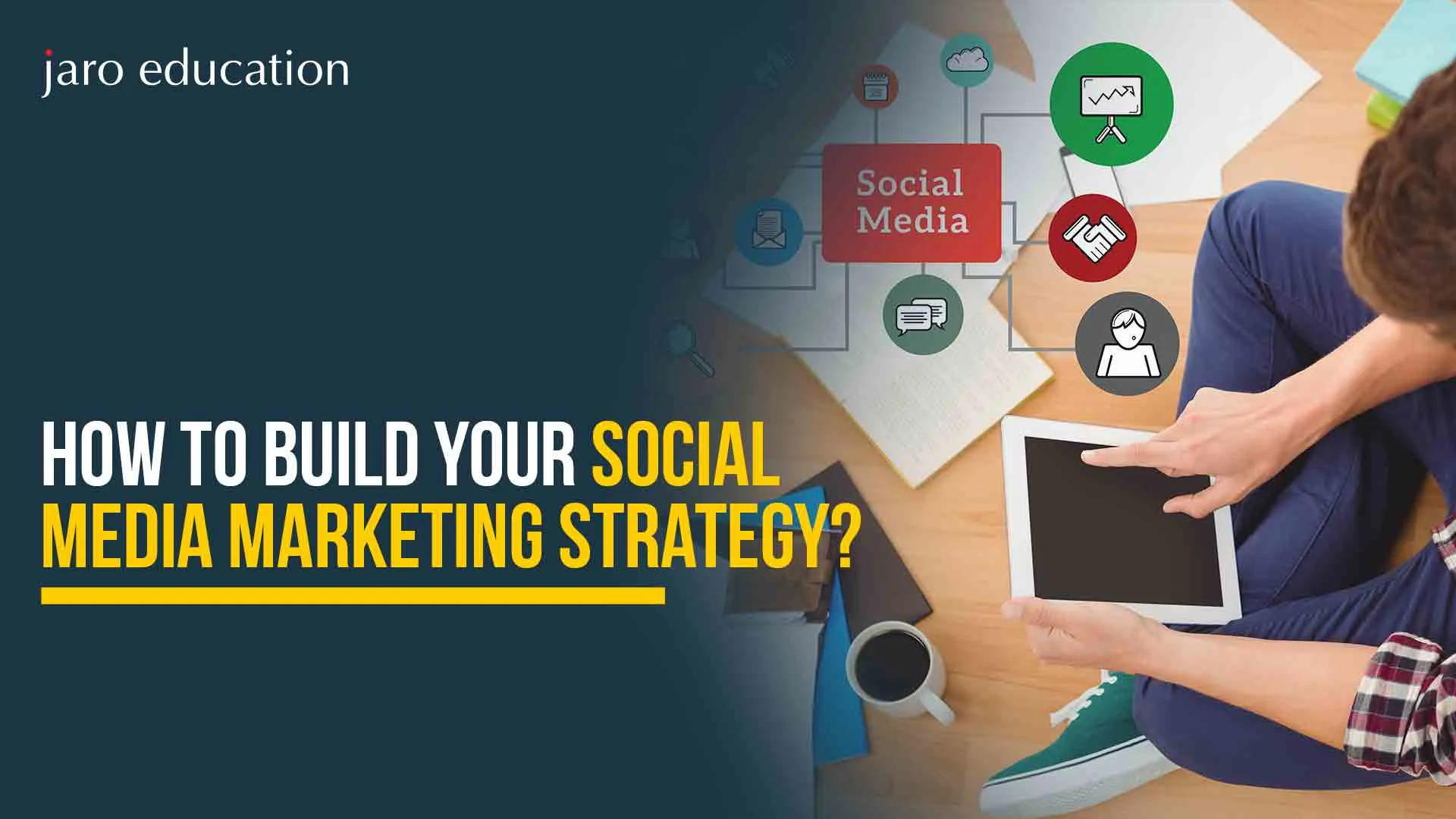
- jaro Education
- 17, May 2024
- 10:40 am
Creating a robust online presence is not limited to posting beautiful images (or trending reels)—it requires a plan. That is the function of a social media marketing strategy. Whether you’re a small business owner, a digital marketer, or a content creator, a well-constructed strategy will help you connect with your audience, grow your brand, and achieve your goals.
This blog will take you step-by-step to create your strategy with real social media marketing examples, practical social media marketing tips, and a comprehensive understanding of the social media marketing process. You’ll also walk away with an understanding of what a social media strategy is, why it’s important, and how to use it to your advantage. Are you ready to turn your likes into leads? Let’s get started.
What is Social Media Marketing?
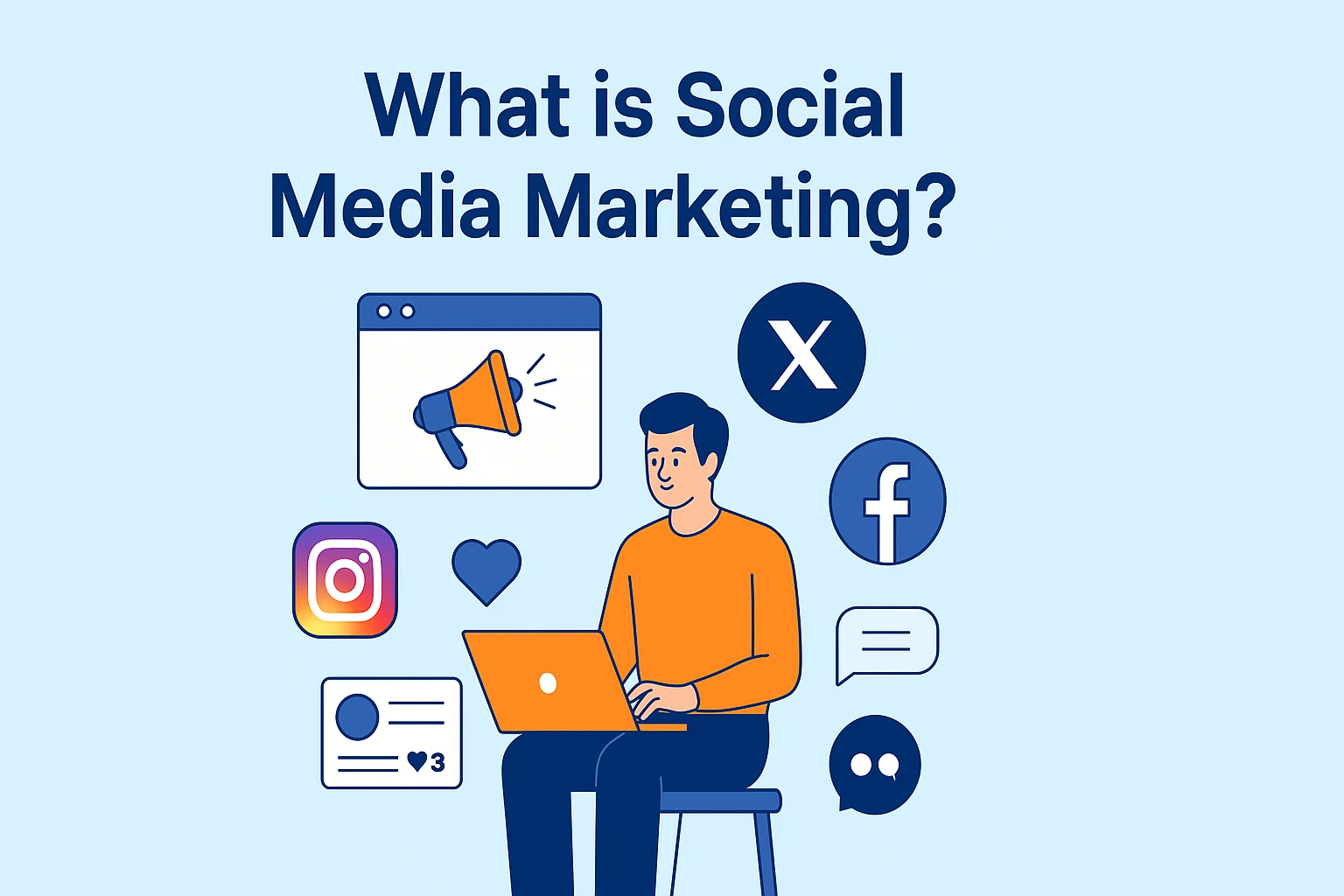
Social media marketing involves leveraging social media platforms such as Instagram, X (formerly known as Twitter), and Facebook to promote your brand and market your product or service.
For instance, if your company launches a new product and you intend to advertise the launch on social media, that falls under social media marketing. Similarly, engaging with your audience through comments and creating compelling content that reflects your brand’s values and narrative also falls within social media marketing.
What is a Social Media Strategy?
Social media marketing strategy refers to a firm that develops to enhance brand awareness and engagement, to make sales, to bolster customer retention, loyalty and finally, stimulate growth. In the process of making this marketing strategy, it can be essential that the company gets to know its audience, the prospective customers, as well as the current customers. The strategy will also entail determining the content type to post as well as monitoring the measurements toto obtain insights into the social media campaigns of the company. Companies also end up employing a social media manager or a marketing director to formulate a plan that the team members can execute.
Why Social Media Marketing Strategy is Important?
Social media used to be considered enjoyable, but now it has become a potent business tool in the modern world. However, without a definite plan at hand, it is soon possible to lose track of the noise. An effective social media marketing plan makes you remain focused, stay in touch with your audience, and expand your brand. It makes random posts become real ones.
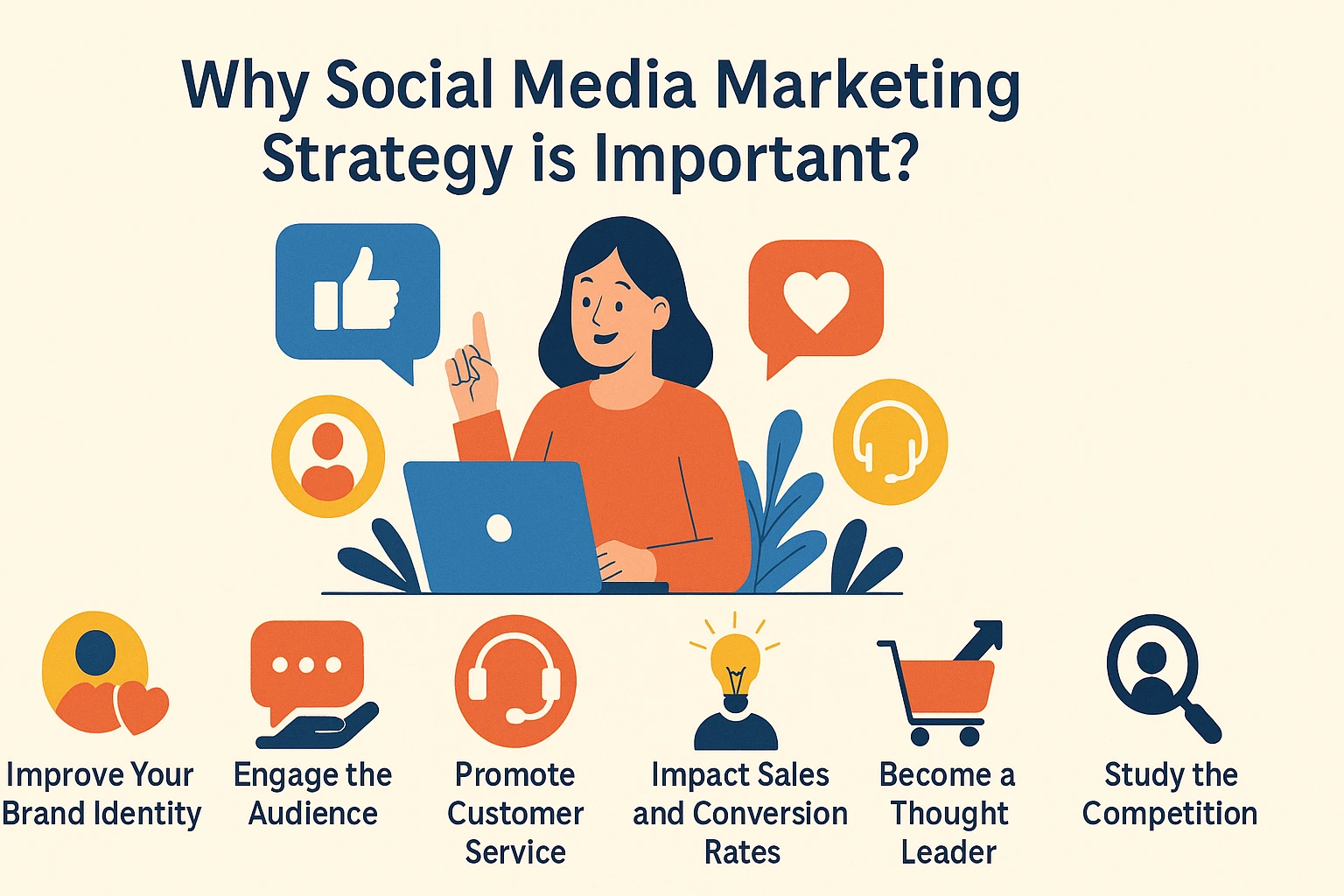
Here are some benefits of social media marketing:
- Improve Your Brand Identity: SMM can humanize your company, and build trust, loyalty, authority, and recognition. By showcasing the people behind your brand and real users of your product, you enhance brand credibility and authenticity. Aligning your brand with values and actions that support activism and philanthropy can also greatly benefit your reputation.
- Engage the Audience: Unlike traditional media, social media allows direct interaction between customers and businesses. You can respond to posts, share user-generated content, and follow up with dissatisfied customers. Gathering customer perspectives on your products and services is easier than ever.
- Promote Customer Service: Social media platforms provide a channel for addressing customer inquiries, complaints, and feedback promptly. Timely responses can enhance customer satisfaction and loyalty.
- Impact Sales and Conversion Rates: By strategically promoting products and services, you can drive sales and improve conversion rates. Social media platforms allow you to showcase offerings, run targeted ad campaigns, and encourage purchases.
- Become a Thought Leader: Regularly sharing valuable content positions your brand as an industry expert. Thought leadership builds trust and attracts an engaged audience.
- Study the Competition: Social media enables you to monitor competitors, analyze their strategies, and learn from their successes and failures. This competitive intelligence informs your own marketing decisions.
- Improve SERP Presence: Active social media profiles contribute to search engine visibility. Consistent posting and engagement can positively impact your search engine rankings.
What Are the Best Social Media Marketing Tips for 2025?
Just in case you want to maximize your social media strategies, you can give thought to knowing what you want, various social media websites and their users, and make strategies according to your needs. The following is a guide to making a successful marketing plan for social media:
1. Design Marketing Objectives
Productive social media strategies basically entail the identification of objectives that the marketing teams of a company desire to be met. Such objectives can be enhancing recognition of a brand, increasing purchase of products or services, and creating a base of repeat customers. You can establish SMART goals, and this implies that goals are specific, measurable, achievable, relevant, and time-based.
Related: What are the jobs in Social media marketing, and what are their responsibilities?
2. Get to Know Your Viewers
You can conduct a gathering with the marketing unit in the company to learn more about the audience. This team can understand the target audience, and with this data, you can come up with personas of the people forming the audience. To develop buyer personas of the audience, you may begin by collecting demographic information, such as gender, ethnicity, age, and location. You can then take up the job of listing information such as the main interests, problems, and needs of the person via customer research.
The study and information can assist you in developing a social media plan that is in line with the organization’s objectives. Say, you need to attract more traffic to the website of the company to achieve this aim by ensuring that a particular number of clicks are made on an advertisement campaign on social media. Conducting user research on the ads or trying to test two different ads can enable you to create a winning campaign by selecting a particular ad copy, images or messages.
3. Select the Best Platform
The correct selection of the social media outlet might rely on the social site that your buyers use most. A good knowledge of every platform, its abilities and potentials, can enable you to plan the strategy successfully. Remembering your audience and crafting objectives that are based on the same might help you develop an effective social media plan that can be implemented in your company.
Your content will also be different depending on the social media platform in question.
As an example, suppose your target audience spends the better part of their day on a picture-sharing social site; then you can develop an approach that takes advantage of such visual content as pictures or graphics. The facades of your target market, which you have to reach, also have a central role in attaining your social media goals at every stage of the customer lifecycle.
4. Make Social Media Content
Good social media marketing concentrates on what initiates discussions and communication. To that, you can think of being creative with your content. Tenable and applicable content can assist a brand in enhancing its social touch. Your approach to your people is that you have taken it upon yourself to target your audience by producing something that should be of value to the audience. To make the best out of your material, to reduce costs, and to effectively create content that should ideally work best, you can apply the four Rs of content marketing. This can be:
- Reorganise: Reorganising your contents entails dividing a large piece into smaller pieces. In case you have a complicated infographic that contains a huge amount of information, you can remove several graphics or visuals and make them work as separate visuals.
- Rewrite: The content of other writers would come in handy, especially when you want to save the trouble of rewriting yet another piece. Take a tour of the content library and check whether there are some relevant articles that you can scan through and extract some fantastic tips.
- Redesign: A redesign that involves inserting entertaining and attractive visuals and graphics, depending on current trends, could also allow you to win the interest of your audience. You can think of refreshing an old pro with more topical information for your readers.
- Retire: There are multiple occasions when reusing your own material may not be easy due to the mere fact that it has no use anymore. Here you can delete the content and make sure that whatever you are publishing is relevant to your target audience, and so you can consider publishing current and interesting content since it has a high likelihood of being read by the audience.
5. Research Your Competition
After conducting audience research, the next step is competitor research. Invest some time in understanding how your direct competitors are leveraging social media. Identify which platforms they use most frequently, analyze the type of content they share, and observe their posting frequency.
This review will help you understand how other players in your industry are optimizing their social media presence. It can also highlight opportunities where your brand can stand out. For example, if you notice that competitors are not posting regularly on a particular platform where your target audience is highly active, you can capitalize on this gap to gain visibility and engagement.
6. Make a Calendar of Contents
Prepare the list of contents to be posted on the social sites of your company. You may include all kinds of product updates, sales notices, current events, and backstage photos of your company. Put the content on a calendar that can help to come up with a fixed or regular posting schedule.
You could utilize your audience and competitor studies and come up with an effective content calendar design. This book can expedite your capability to produce the kind of material that can interest people in your audience. Most well-known examples of social media marketing usually entail the release of a variety of content, such as pictures, links, announcements, and contests.
7. Be in Touch with Your Audience
Other than posting consistently, it is also important to communicate with your audience. You will be able to track the response to the posts and the way the users interact with your post. You can allocate some time to the performance of comments and reply to questions from your audience regularly.
When your social media plan generates remarks and issues that can be applied to other groups, it may be reasonable to create a workflow to address the audience properly. You can engage various teams in the process of social media marketing. E.g., you can team up with customer support or sales reps to answer enquiries concerning the activities or the prices of your products.
8. Measure the Social Media Track Social Media
Hopefully, after designing content calendars and engagement plans, you can choose to monitor your social media metrics at the end of the month. This activity can help you confirm whether you are achieving the goals you set earlier. Analytics for your account, audio, and preferences of posts are available on every social media platform where you operate your account.
Enter the information into a spreadsheet or the usual report document used in your company to make comparisons over months. The metrics that matter most to your business depend on your social media marketing objectives. For example, when you are interested in making sales, the revenue related to your social media account is probably the most influential.
What Are Some Successful Social Media Marketing Examples?
One of the best ways to learn what works and what doesn’t with social media marketing is learning from actual, real-world examples; below are a few motivating campaigns with a combination of creativity, engagement and smart strategy.
1. Spotify – Wrapped Campaign

*Spotify Newsroom
Spotify issues its personalized “Wrapped” every year, showing them the top songs, artists, and genres.
Why it worked:
- Personalization helps users engage with your product
- Encourages users to share content on their own pages
- User-generated content went viral and provided awareness of a brand
Social media marketing tip: Let your audience become your marketer with content they want to share.
2. Zomato – Related & Trendy Posts

*1000 logos
Zomato India continues to create funny, relatable memes/posts that go back to food and the current trend.
Why it worked:
- Immediate engagement because of humor
- Localized content makes users feel a solid connection with the brand
- High shareable content with brand recall
Social media marketing tip: Use memes and relatable content to stay relevant and begin to build a personality for your brand.
How Does the Social Media Marketing Process Work?
Social media has influenced how we communicate and how companies can uplift a consumer’s decision-making process around a product or service, from all aspects of a post that activates audience engagement on Facebook to the collection of location, demographics, and customer data to make advertising meaningful.
- SMM Action Plan
The more focused your SMM approach, the better it will perform. Hootsuite is a leading provider of social media management software and has outlined an action plan, including a framework for managing SMM as part of campaign delivery and tracking:
- Align SMM goals against business objectives
- Understand your target customers’ characteristics, including age, geographic location, income, job title, industry. and interests
- Develop a competitive assessment of who your competitors are (successes and failures)
- Understand and document your SMM impact (successes and failures)
- Determine a timetable (calendar) for the delivery of SMM content
- Develop best-in-class content
- Measure the impact of SMM and refine your strategy and plan
- Customer Relationship Management (CRM)
When you compare social media marketing (SMM) to traditional marketing, there are some clear distinctions in regard to interaction. SMM has two types of interaction that allow for improved targeted customer relationship tools—customer-to-customer (C-C) and firm-to-customer (F-C). Stated differently, traditional marketing measures a customer’s value by identifying and including purchase behavior.
- Shareable Content
Online businesses can take advantage of the increased interconnectivity created by SMM to generate sticky content, the marketing vernacular for attractive content that connects with customers on the first swipe or click. This causes the customer to want to purchase the product and to share the content. This type of word-of-mouth advertising reaches an audience that is otherwise unreachable and has the unstated endorsement of someone the recipient knows and trusts, making shareable content one of several major ways social media marketing creates growth.
- Earned Media
SMM also poses the most efficient way for a business to enjoy a different type of earned media (media is a broad term that is a catchall for any type of brand exposure when it is not through a paid customer-created product reviews and recommendations.
- Viral Marketing
Another SMM approach that takes audience-generated message content is viral marketing, a sales technique that looks to generate rapid dissemination of word-of-mouth product information. An audience-share marketing message goes viral when the public has shared it far beyond the original target audience, an extremely low-cost and simple way to generate sales.
- Metrics to Monitor
Sprout Social identifies the most significant SMM metrics to monitor as being customer focused, including engagement (likes, comments, shares and clicks); impressions (the number of times a post appeared); reach/virality (the number of unique views an SMM has); share of voice (how far a brand can reach in the online world); referrals (how a user arrived at a site); conversion (when a user made a purchase on the site); and response rate/time (how often and fast a business responds to messages) which is an important metric focused on the business.
Step into the Right Career with Jaro Education’s Expert Counseling
Selecting the ideal career from thousands of possible positions can be a daunting task, but Jaro Education provides expert counseling that makes your journey easier, clearer, guided, focused, and goal-oriented. Jaro Education has emerged as a trustworthy leader in online education, guidance, and advisory services, having successfully guided more than 3 lakh professionals and students to synchronize their aspirations with the industry’s demands. Jaro Education offers personalized counseling using a unique combination of market knowledge, expertise, an analysis of your skill set, and personalized guidance to help you understand your future. By partnering with universities and industry-relevant programs, Jaro Education also ensures that you not only launch yourself on the right career path but also thrive there. If you are an undergraduate student or a working professional looking for growth or advancement in your career, Jaro Education provides the experience, background and career success stories as a destination for comprehensive career transformation.
Final Thoughts
These strategies we’ve discussed are sure to boost your returns in today’s fast-paced social media world. But remember, the internet keeps changing. New tools, websites, and trends pop up all the time. To stay successful, you’ve got to be ready to adapt. Keep learning and adjusting your approach. That way, your social media marketing will keep working well even as things evolve.
Your strategy isn’t something you finish and forget about. It’s always a work in progress. So, make it a habit to check in on your plan every few months. See what’s working and what needs tweaking. With this mindset, you’ll keep growing and improving your social media presence.
Frequently Asked Questions
A social media marketing strategy is a structured plan that outlines your goals, target audience, content approach, posting schedule, and performance metrics across social platforms to drive engagement, growth, and brand awareness.
A strategy helps businesses maintain consistency, reach the right audience, track performance, and achieve specific goals like lead generation, brand visibility, or customer engagement.
Key components include audience research, goal setting, content planning, platform selection, engagement tactics, posting schedule, and analytics tracking.
It’s ideal to review and adjust your strategy every quarter based on performance analytics, platform changes, and evolving audience behavior.
Choose platforms based on your audience and goals. Common ones include Facebook, Instagram, LinkedIn, Twitter (X), TikTok, and YouTube.
Track KPIs like engagement rate, reach, clicks, conversions, follower growth, and ROI using platform insights and tools like Google Analytics.
Visual content such as videos, infographics, reels, memes, and behind-the-scenes posts typically perform well. The key is to align content with your audience’s interests and platform trends.
Absolutely. A well-planned strategy helps small businesses build brand awareness, connect with local audiences, and compete with larger brands cost-effectively.
Yes, each platform has different user behavior, content formats, and engagement styles. Customize your content and approach accordingly.
Jaro Education offers expert career counseling and programs in digital marketing, helping students and professionals gain skills in social media strategy, analytics, and content creation for a successful marketing career.
Recent Blogs
It seems we can't find what you're looking for.


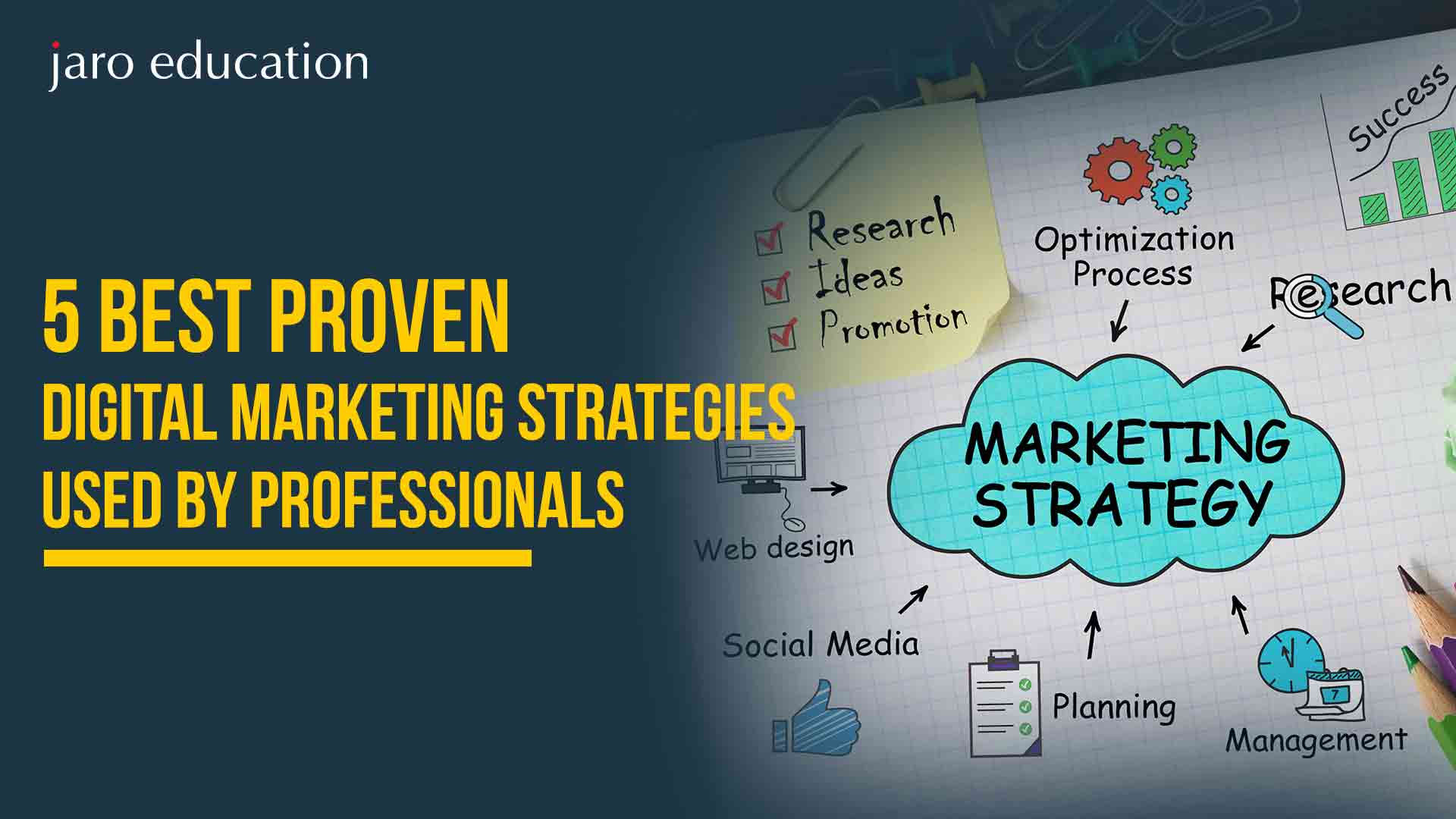
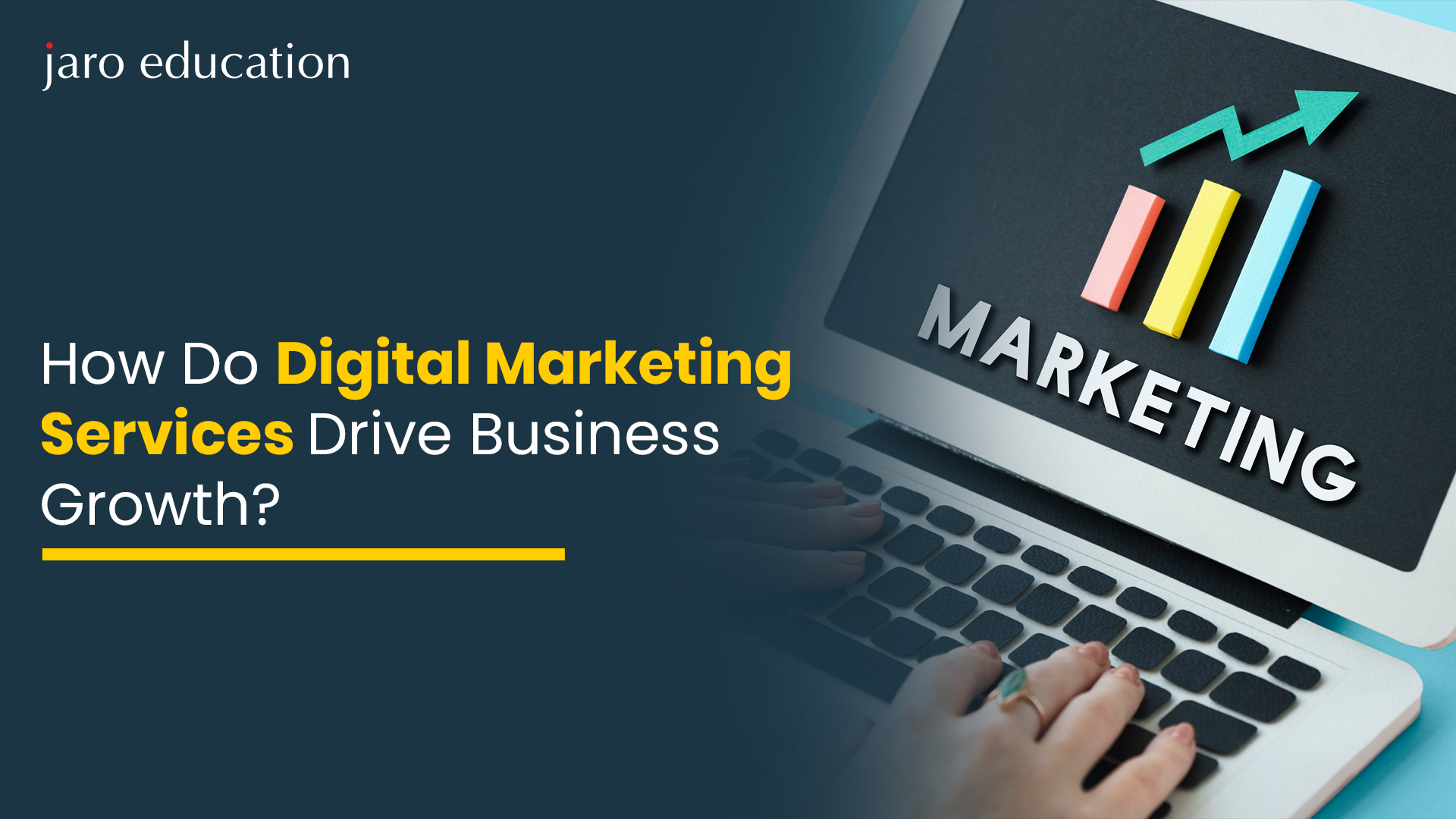




1 thought on “How to Build Your Social Media Marketing Strategy?”
Building a strong social media strategy starts with understanding your audience. Know who you’re talking to, choose the right platforms, create engaging content, and track what works. Consistency is key! Remember, it’s a marathon, not a sprint. For more valuable resources and services similar to our discussion, explore https://bawejamedia.com/